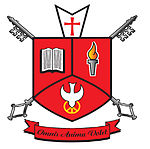Meadowvale, Mississauga

Meadowvale is a large suburban district located in the northwestern part of Mississauga, Ontario, Canada, just west of Toronto. In the 19th and early 20th centuries, Meadowvale Village in Toronto Township was established nearby and named for the meadows along the Credit River. By the 1970s the village would diminish with the current area to the west selected to be the site of a "new town" for the newly (1974) incorporated City of Mississauga and took the Meadowvale name, while "Village" was added to the historic community. This newer section comprises the bulk of the district today, and includes Lisgar, another former hamlet of which no trace remains today.
Excerpt from the Wikipedia article Meadowvale, Mississauga (License: CC BY-SA 3.0, Authors, Images).Meadowvale, Mississauga
Gaslamp Walk, Mississauga Meadowvale Village
Geographical coordinates (GPS) Address Nearby Places Show on map
Geographical coordinates (GPS)
| Latitude | Longitude |
|---|---|
| N 43.628611111111 ° | E -79.728333333333 ° |
Address
Gaslamp Walk 7054
L5W 1A1 Mississauga, Meadowvale Village
Ontario, Canada
Open on Google Maps








